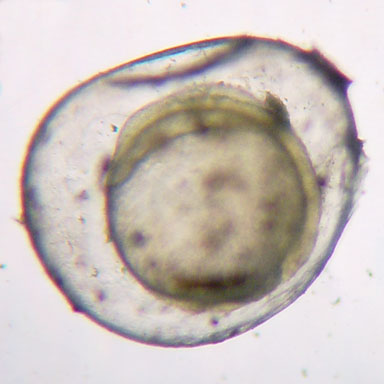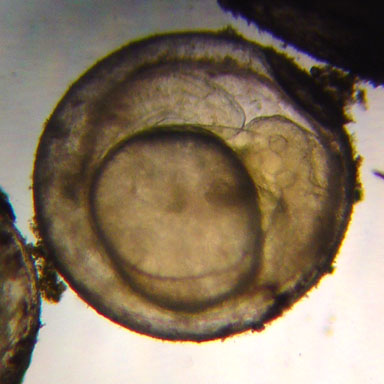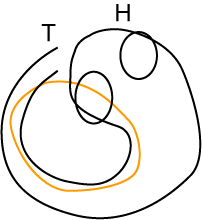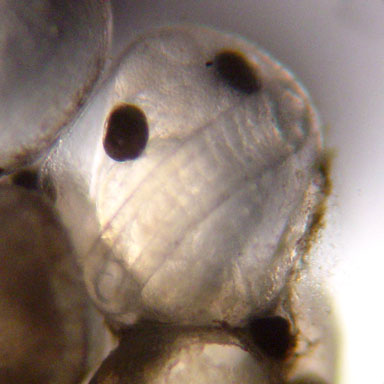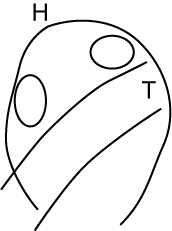
Herring developing in eggs - 2007
These images were obtained using a Meiji 1-7x zoom microscope and a Sony DSC-F707 5 Mega-pixel camera. The images of eggs are at 7x, fish at 1x. The "Day numbers" are educated guesses at best. Eggs were being laid during the period of collection, and the temperature, which varied a great deal, has a big effect on development rate.
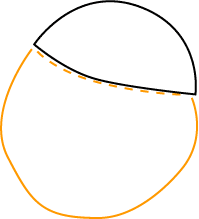
Day 1: Cells have been rapidly dividing since fertilization of the egg; they form a cap (indicated by the black line) over the yoke mass (yellow line). The yellow line is dashed where the yoke extends up under the cell cap.
The egg is about 1 mm in diameter.


